Easter Rising 1916: Who signed the proclamation?
- Published
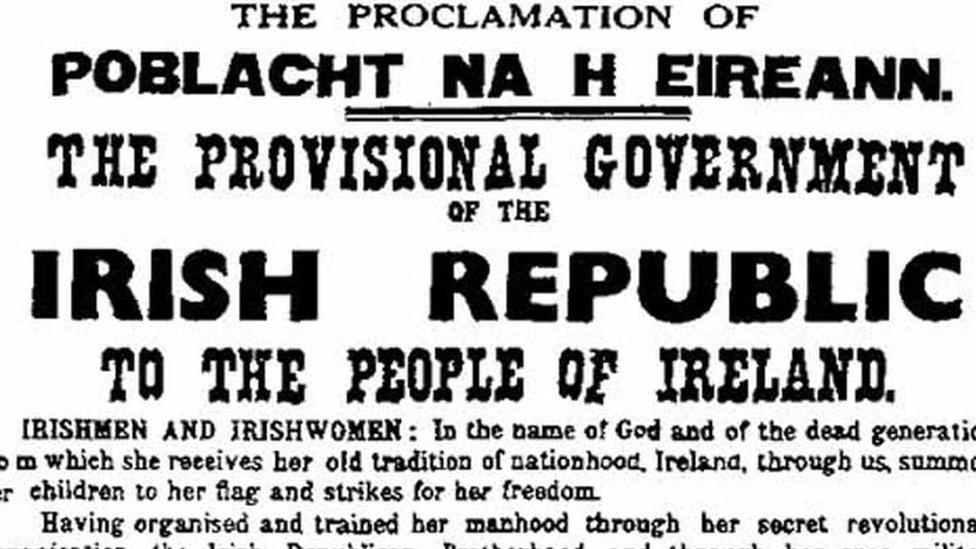
The proclamation read by Pádraig Pearse at the beginning of the Easter Rising
Easter Monday 1916. Rebel forces, determined to overthrow British rule in Ireland, storm key locations in Dublin.
The Easter Rising has begun.
Just hours later, the General Post Office (GPO) has been stormed by more than 150 Irish Volunteers and members of the Irish Citizen Army.
Shortly after noon, three of the rebellion's leaders step outside and produce a proclamation which declares an Irish republic.
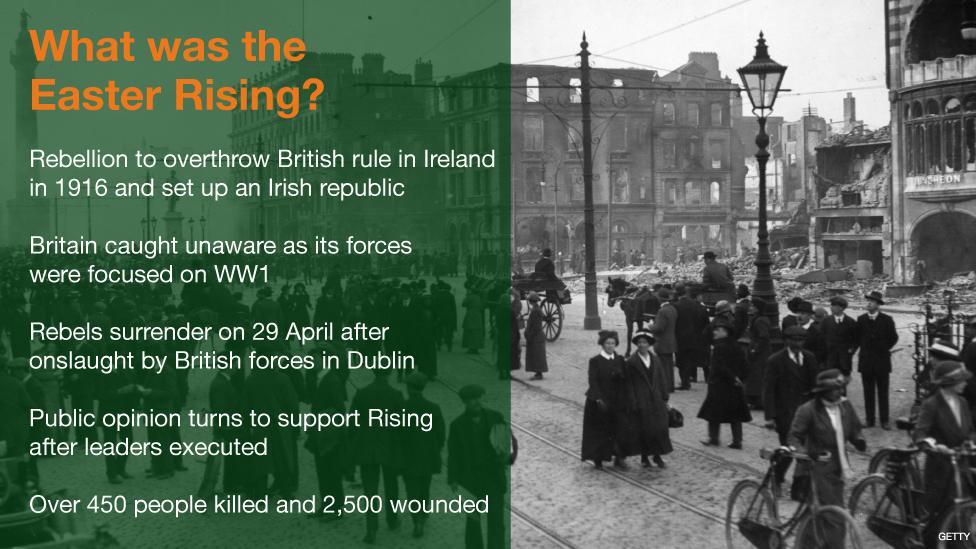
It is read aloud by Pádraig Pearse.
"Irishmen and Irishwomen," Pearse reads. "In the name of God and of the dead generations from which she receives her old tradition of nationhood, Ireland through us, summons her children to her flag and strikes for her freedom."
So began five days of fighting that saw almost 500 people killed and much of Dublin destroyed.
The proclamation was signed by seven men. Who were they?
Pádraig Pearse
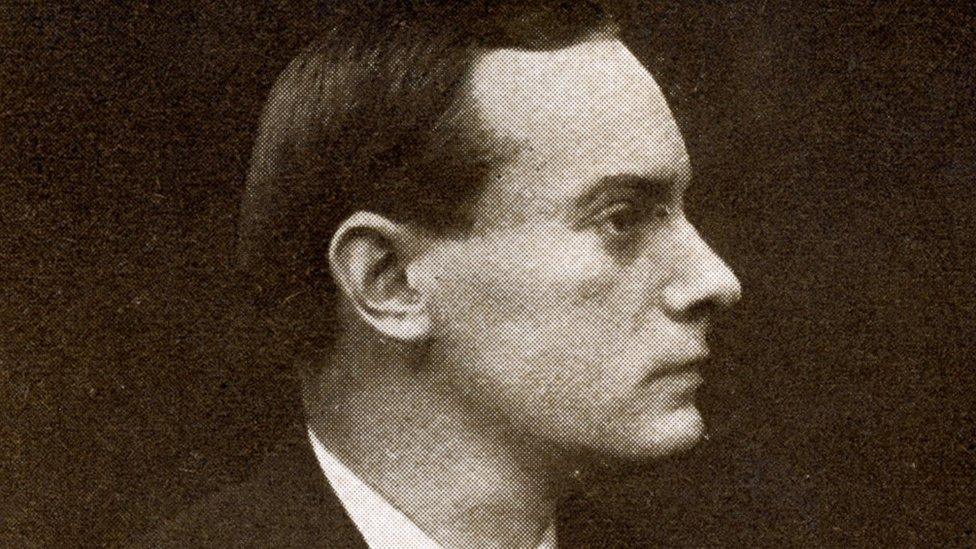
A teacher, barrister, poet and political activist, Pearse was seen by many as the embodiment of the rebellion.
Born in Dublin, he studied law and was called to the bar. He was committed to the revival of the Irish language and education reform.
Pearse joined the Irish Volunteers, a military organisation, in November 1913 and increasingly came to prominence within the republican movement.
His speech at the commemoration of Wolfe Tone - the leader of the 1798 Irish Rebellion - gained him yet more notice.
He was chosen to give the oration at the funeral of O'Donovan Rossa, a prominent member of the Irish Republican Brotherhood known colloquially as the Fenians.
His challenge to the 'defenders of the realm' came to be seen as a prophetic and significant moment in the lead-up to the Rising.
"The fools, the fools, the fools! They have left us our Fenian dead, and while Ireland holds these graves, Ireland unfree shall never be at peace," he said.
In May 1915, he was made a member of the Irish Republican Brotherhood (IRB) military council. The IRB leaders were the main strategists of the Easter Rising.
During the fighting, he served at the rebellion headquarters at the GPO as commander-in-chief.
He was court-martialled at Richmond Barracks on 2 May and was executed by firing squad on 3 May.
Thomas Clarke

A proponent of armed revolution for most of his life, Clarke was born in England to Irish parents but grew up in Dungannon, County Tyrone after spending some years in South Africa.
In 1883, he was arrested and jailed for 15 years in England for his role in a plot to blow up London Bridge as part of an Irish Republican Brotherhood campaign.
He was central in purging the ageing leadership of the Irish Republican Brotherhood, and supported by a new generation of young, committed members, he brought a new sense of purpose to the organisation.
The Easter Rising was planned by the seven-man IRB military council - a body set up on Clarke's initiative in May 1915.
He was the oldest of the Easter Rising leaders and the second person to be executed, following Pádraig Pearse.
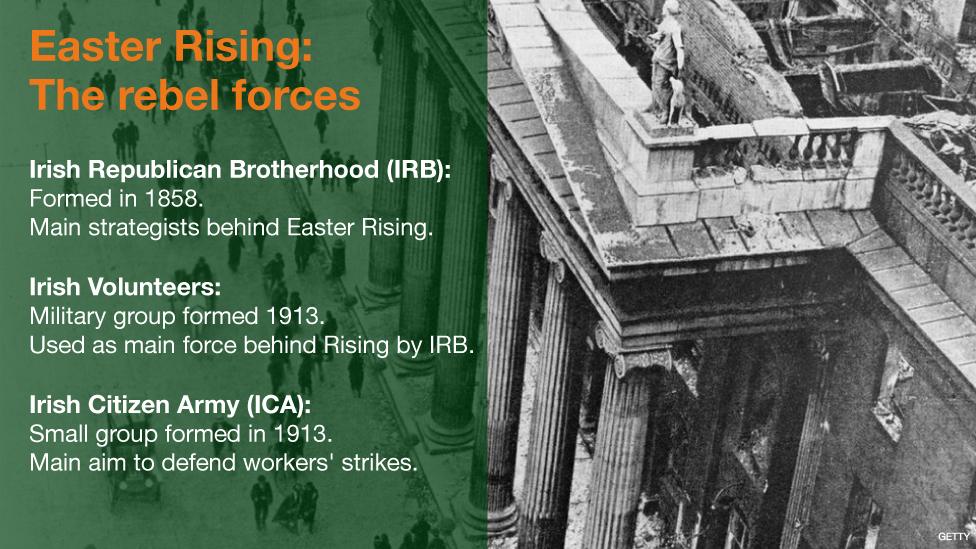
Seán Mac Diarmada
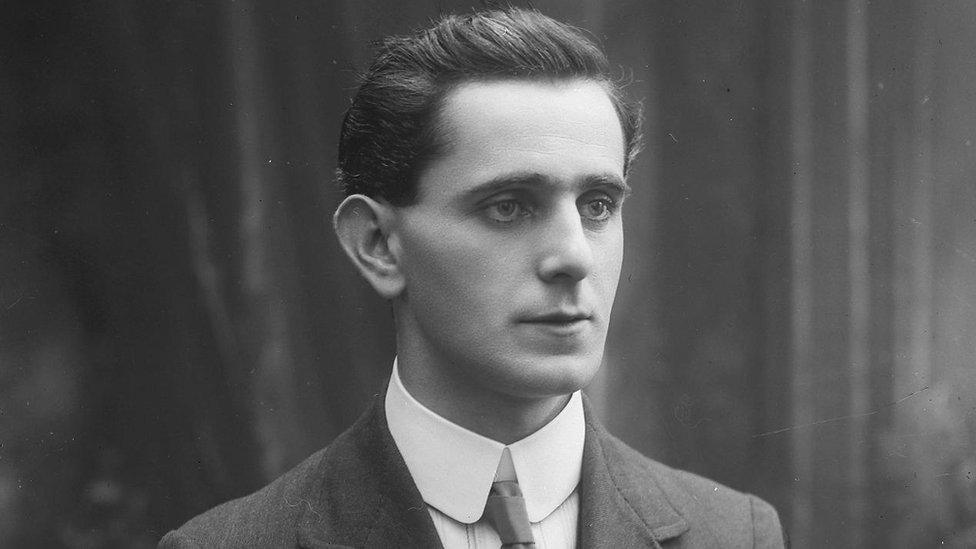
The eighth of 10 children, Mac Diarmada was born in Kiltyclogher, County Leitrim. He worked as a tram conductor in Belfast, before becoming interested in nationalist politics.
He was a member of the the Gaelic League, a national organiser for Sinn Féin and later became manager of the newspaper Irish Freedom.
Mac Diarmada was arrested in County Galway after giving a speech against enlisting into the British Army.
He joined the military committee of the Irish Republican Brotherhood in September 1915 and was one of the key organisers of the Rising.
He was stationed at the GPO during Easter week. Following his court martial, he was executed on 12 May for his part in the Rising.
Before his death, he wrote: "I die that the Irish nation might live!"
Thomas MacDonagh
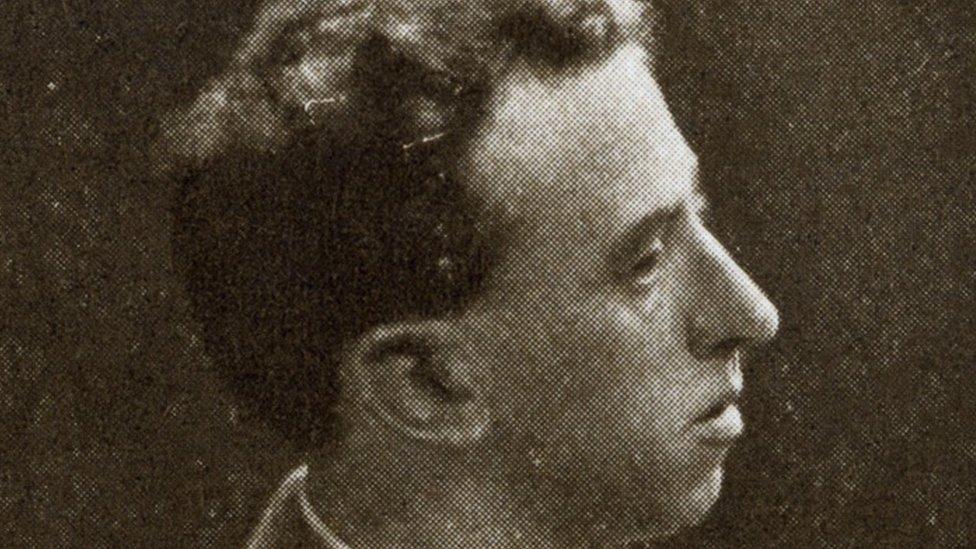
Born in County Tipperary, MacDonagh trained as a priest, but eventually became a teacher at St Enda's School in Rathfarnham, Dublin which he helped to found with Pádraig Pearse.
A poet, writer and dramatist, he joined the Irish Volunteers in November 1913.
Although he was a member of the Irish Republican Brotherhood, he was not co-opted onto the military council until early April 1916, and so had little part in the planning of the Rising.
He is, however, believed to have contributed to the content of the proclamation. MacDonagh was in charge at Jacob's biscuit factory, a key battle location taken by rebel forces during the Rising.
He was court-martialled and executed on 3 May.
Éamonn Ceannt
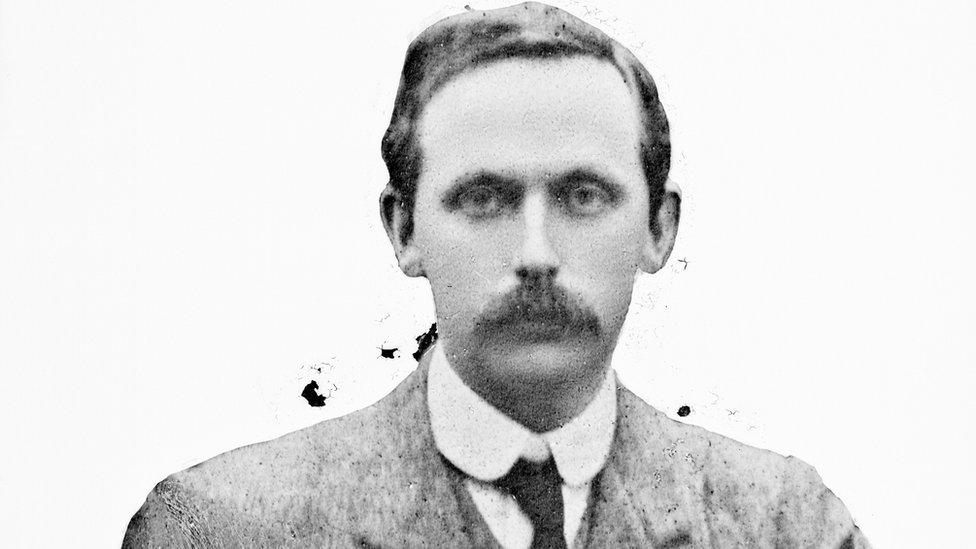
Raised in County Galway, Ceannt was the son of an officer in the Royal Irish Constabulary.
A talented musician, he was a fluent Irish speaker and worked as an accountant for Dublin Corporation.
He later became a founder of the Irish Volunteers, where he took the role of commander of the Fourth Battalion.
Before he was executed on 8 May, he left this message: "I leave for the guidance of other Irish Revolutionaries, who may tread the path which I have trod, this advice - never to treat with the enemy, never to surrender at his mercy, but to fight to a finish....in the years to come Ireland will honour those who risked all for her honour at Easter 1916."
James Connolly
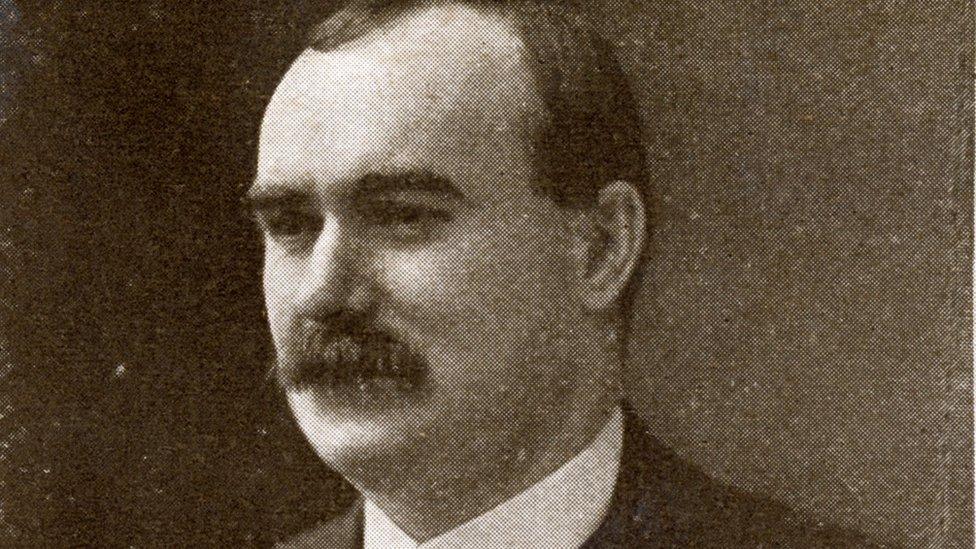
Born in Edinburgh to Irish parents, Connolly was a revolutionary socialist, a trade union leader and a political theorist.
He moved to Dublin in 1896, where he founded the Irish Socialist Republican Party.
He was general secretary of the Irish Transport and General Workers' Union and commander of the Irish Citizen Army, which was set up to protect workers.
With the outbreak of war, Connolly became increasingly committed to formenting an insurrection against British rule in Ireland.
During the Rising, he was appointed commandant-general of the Dublin forces. He was wounded in the fighting and later surrendered.
He faced a firing squad on 12 May 1916 and was executed while tied to a chair because of his injuries.
He was the last of the leaders to be executed.
Joseph Plunkett
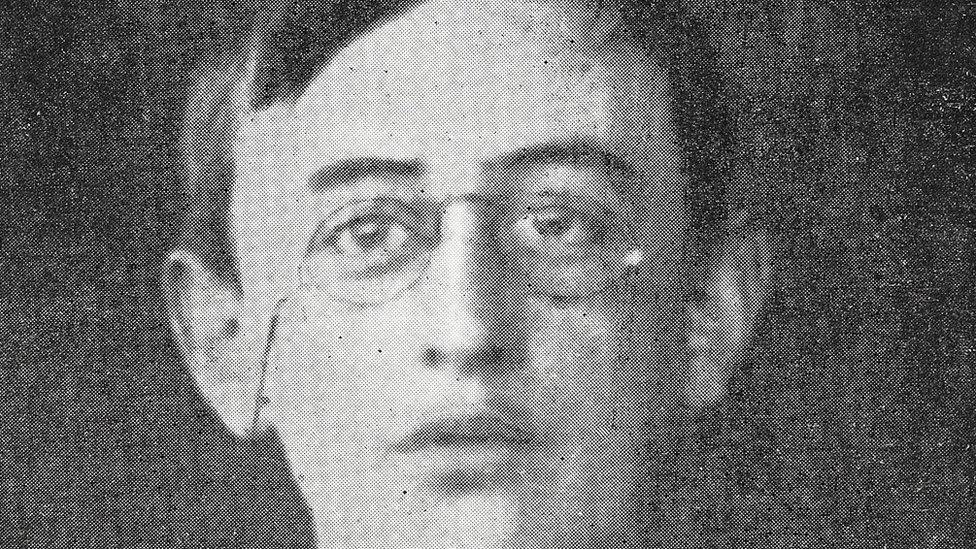
Born in Dublin, Plunkett was a nationalist, poet and journalist.
Before the Rising, he was known for his writing and interest in Irish culture. He worked with Thomas MacDonagh as co-editor of the Irish Review, a literary magazine founded by MacDonagh.
He was also a director of the Irish Theatre.
In 1913, he joined the Irish Volunteers and, two years later, travelled to Germany to assist Sir Roger Casement in getting arms and assistance for the Easter Rising.
Plunkett was involved in the military strategy for the insurrection and was the youngest signatory of the Proclamation.
He was executed on 4 May 1916, just hours after he married artist Grace Gifford in Kilmainham Gaol.